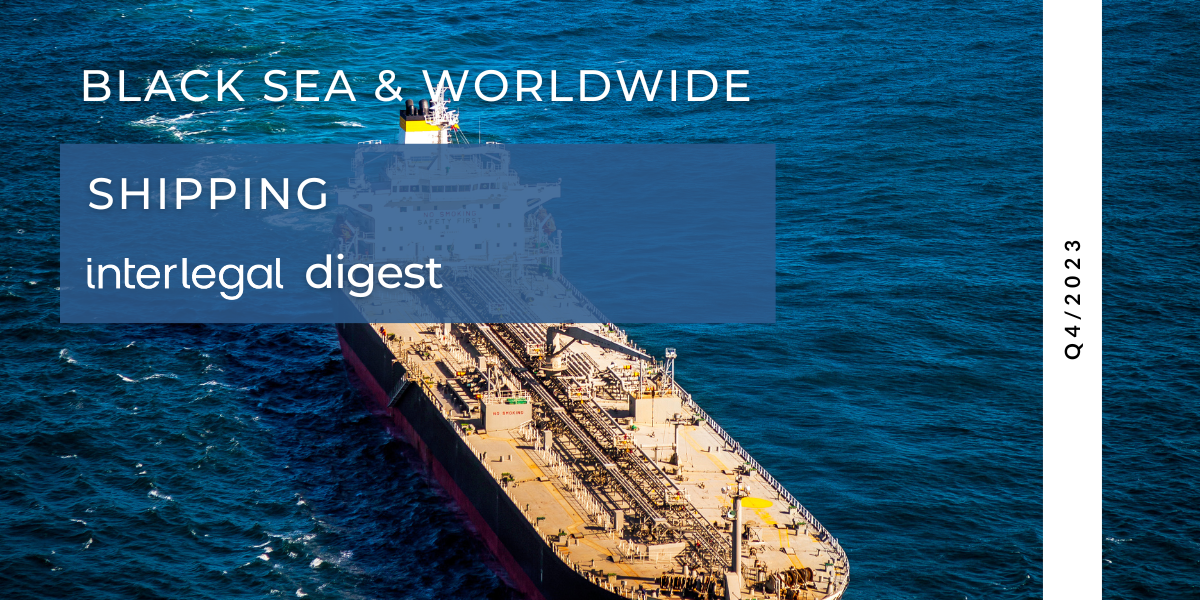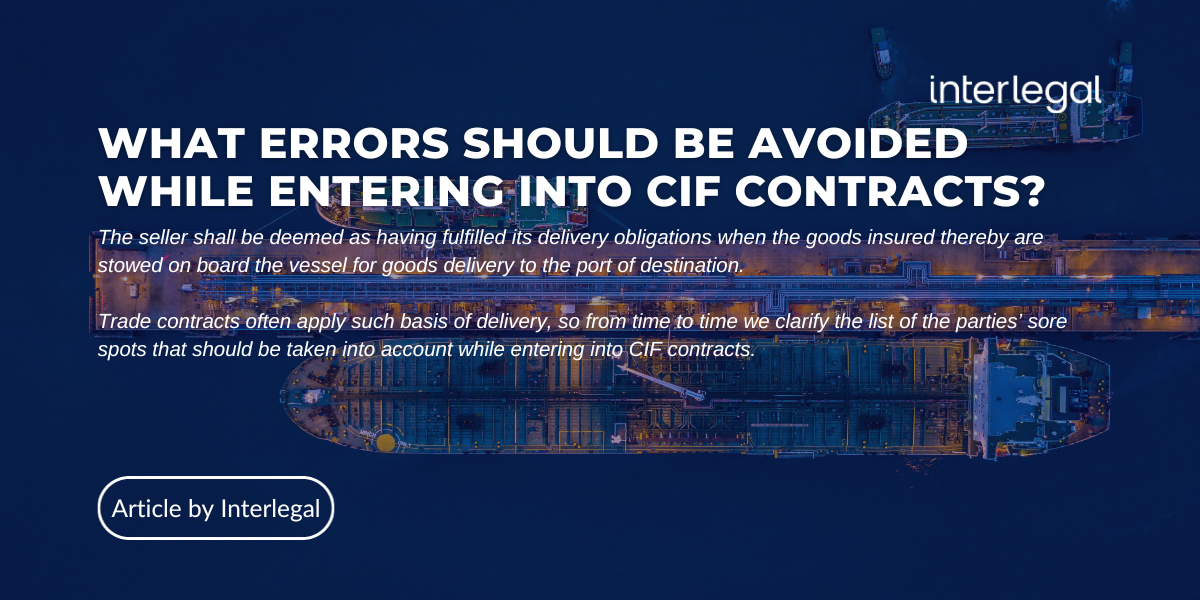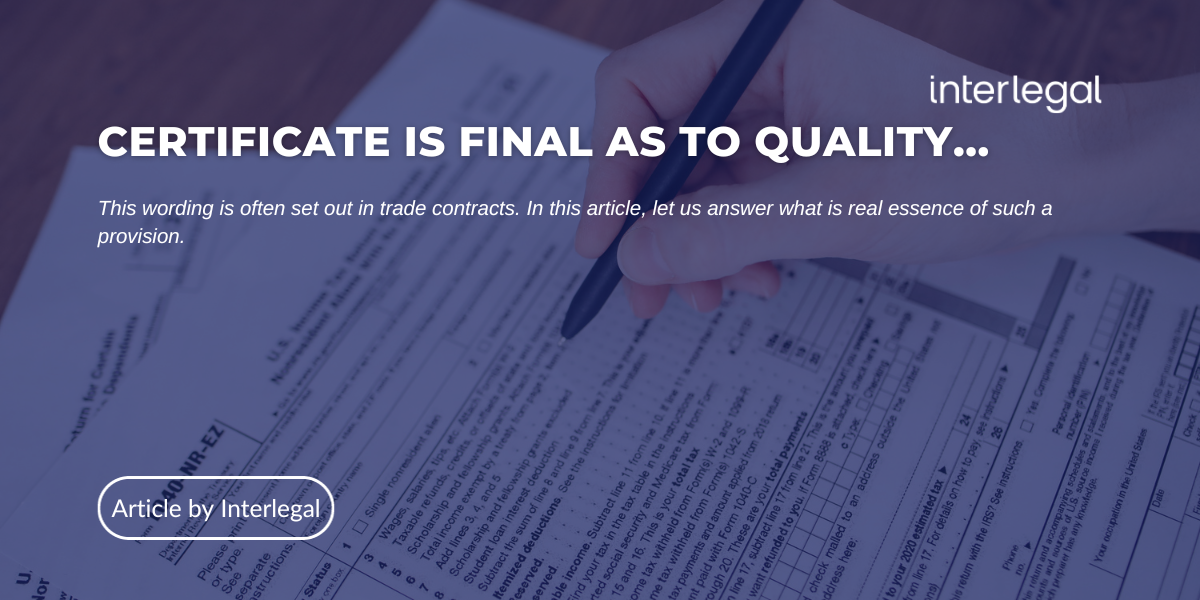Law on Sea Ports of Ukraine: First Impressions
26 June, 2012
31
Ukraine has adopted and published new Law on Sea Ports. What is worth emphasizing first as the most important about this Law is that a long-waited reform of a sea port legal status has been introduced in the long run.
1. Coming in Force and Transition Period
Like any grand reform port reform needs to bridge the gap between its adoption and implementation. One year period is assigned in Ukraine for this task by the Law.
For all that some provisions of the law come in force since the day of publication, June 13, 2012. Sea terminals acquire the legal status previously inherent only to sea ports, thus becoming a subject of law.
Currently existing sea ports and terminals are considered active and to be automatically entered into the Register of sea ports of Ukraine.
During one year period a lot of organizational work has to be done (reorganization of public companies, inventory of property etc.). And we opine that one year period is good enough for all that stuff.
2. Port Functioning and Development Principles
Port Functioning Principles deserve special attention. They are specified at the art.4 of the Law and are as follows:
1) Uniting interests and activity of the State, represented by Harbour Master Office, Sea Ports Administration, other public companies functioning in the port, and business entities acting in the port;
2) Preservation and creating integrated property complexes on the port’s territory and water area, including those created by uniting state, municipal and private property;
3) Ensuring competition among business entities providing similar products (works, services) in the port;
4) Delimitation of administrative functions on maritime safety control and commercial (business) activity;
5) Separation of functions on insuring maritime safety and supervision (control) over maritime safety;
6) Maritime safety ensuring and support of business activity in the port;
7) Special purpose use of port dues;
8) Preservation of port infrastructure strategic objects in state property;
9) Equal rights to all business entities acting in the sea port, preventing discrimination in access to port infrastructure objects of common use.
One little thing left is to put those principles into life.
3. Planning and Strategy Development
Before you move you have to choose direction. That is axiomatic. Ukrainian 25 years’ prospective ports development strategy (The Strategy) is to be developed by the Ministry of Infrastructure and adopted by the Cabinet of Ministers of Ukraine. There are likely to be long-term (25 years), medium-term (10 years) and short-term (5 years) sea ports development plans. Those plans are to be developed and implemented having regard to sea terminals development plans, as well as development plans of companies whose products or raw materials are subjects to export-import operations and are handled as cargoes in sea ports.
Each sea port development plan is to be approved by Sea Ports Administration of Ukraine. Those plans have to be in line with the Strategy provisions as to its short-term prospects and contain the detailed port territory lay-out.
On the one hand, such planning methods are quite up with modern concept of the Ukrainian State, but, on the other hand, a certain vertical chain of command is observed in planning, which corresponds to the announced trend – sea ports should avoid internal competition.
4. Private Investments and Public-Private Partnership
The Government’s line on encouragement of partnership between state and municipal authorities with business can scarcely be overestimated. The only way to do that is to stimulate and protect private investors. It is no secret that recently made private investments in Ukrainian sea ports can be counted on fingers of one hand. And the most of those investments have been made into greenfield projects. That means that public-private partnership is a problem of today, if not yesterday, for port industry of Ukraine.
Article 25 of the Law is of special interest in this respect. Of course such a brief overview can not pretend for comprehensive analysis of the Law and its economical and social consequences. Moreover a number of other Ukrainian laws will be amended by this Law accordingly. Here we give only some provisions of the Law that we deem the most interesting:
• The mentioned article provides for corporatization of state companies and further alienation of shares of public corporations created in such a way. It also provides for sale of assets of so called integrated property complexes on the competitive basis;
• Long term lease of berths and other infrastructure objects (despite of strategic ones) are provided, including those with buy-out.
Articles 26 and 27 of the Law are designed to encourage and protect private investments. The articles provide that port dues may by assigned for compensation of private investments made in strategic objects of a port infrastructure. To our opinion the very idea of private investments to strategic objects is of great use as it presumes mutual interests of the State and a private investor. It should promote public-private partnership agreements. It should be noted that the list of investment agreements under the Law is not exhaustive. Particular partnership (joint activity agreements), concession, cooperation and other types of contracts may be used on the parties consent to establish public-private partnership under the Law. Interesting enough that public corporations are supposed to be created on the basis of the port infrastructure integrated property complexes. And such corporations will be able to acquire land plots in long-term lease even in the process of corporatization.
So we may assume that port reform instruments are expressly defined. And the main instrument – privatization – has been well tested in Ukraine in practice. At the same time strategic objects of the port infrastructure are not allowed to be privatized or otherwise alienated. Those are hydraulic facilities, port infrastructure objects of common use, navigation equipment facilities and other objects of navigation, hydrographic and cartographic support, as well as ships traffic control system. It looks like the speculations on future privatization of the port infrastructure strategic objects that used to appear in the Ukrainian mass-media have no grounds and turned out to be mere insinuation.
5. Land Relations
It is a common knowledge that land relations are a stumbling block not only in ports, but in such an industrial-agrarian state as modern Ukraine on the whole. And so land relations are also the subject of the Law regulation. Provisions of the part V of the Law are dedicated to land issues.
Article 24 of the Law is worth to be noted in this respect. It regulates the legal regime of land in a sea port. For example revolutionary part 3 of this article provides that port’s territory may consist of lands of sea transport, lands of industry and lands of water fund. This puts an end to scholastic disputes with regard to the legal nature of sea ports land.
What else is needed for investments? The article 25 (1) provides that land plots within a port may be in state, municipal and private property. Thus we may assume that a land question, which was an obstacle for attracting foreign investments (first of all from investment banks), is solved. At least – legally.
And one more thing to note here: It seems we have not seen for many years such a high quality law in terms of legal technique and logic. The comprehensive analysis of the Law “On Sea Ports in Ukraine” will follow.

























































